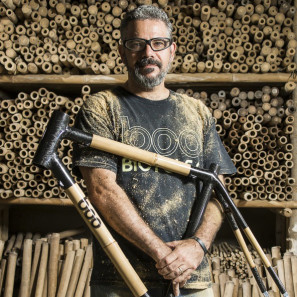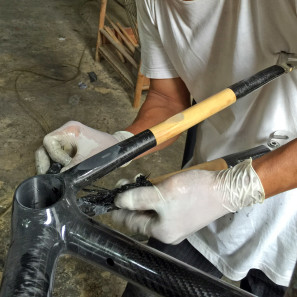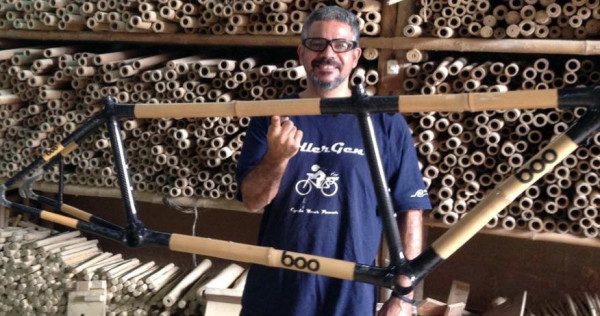
A few weeks back Boo Bicycles put together the transcript of an interview with one of their co-founders, the master woodworker behind some of the early ideas of combining wood craftsmanship, bamboo, and bicycles to take a new approach to bike building. James Wolf tells a pretty good story, and covers everything from swords and traditional Japanese wood joinery, to the Zen of creating things with your hands from natural materials. Hop past the break for a deeper look at bamboo and bike building Zen…
A lifelong craftsman, Wolf figured out a way to turn his passion into an innovative career. Besides making things and riding bikes, he picked up a number of other hobbies along the way and managed to meld a bunch of them into the traditionally inspired bike building that Boo does today.
After studying industrial design at RISD, Wolf turned his childhood knack for working with wood into some well thought out product design. His love of Japanese culture and traditions gave him direction, bringing together centuries of master wood building technique and cutting-edge contemporary product design. After apprenticing in Japan with an artisanal furniture maker, Wolf was introduced to the merits of bamboo for its unique performance characteristics and hasn’t really looked back. With Boo, he combines old tech with new carbon fiber methods, and still percieves bamboo as a high-performing material that holds a huge amount of potential in many industries, and not even just for its sustainable character.
Wolf sees the Zen in building bamboo, as it just consumes so much focus. As you move a tool through the grain of the natural material, each stroke is minutely different than the last, and as a craftsman you learn to feel the material and react with it. That’s something unique to the material, but combines nicely with the hands-on layer-by-layer construction of carbon fiber joinery.
While sustainability wasn’t the driver to work with bamboo, it is something that Boo really appreciates. As Wolf puts it “If you think about the impact that every human life does, how much energy you consume in your life for whatever, a whole number of things, I can cut it down for myself. But as a product designer, I can cut it down for users of my product and make an impact.”
Check out the full interview at BooBicycles.com


